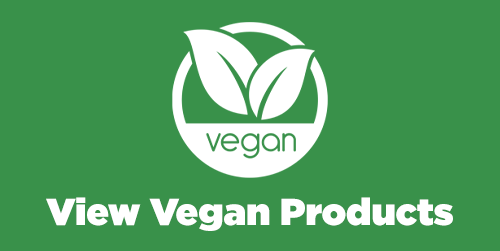During sleep our body goes through a sophisticated and organised programme necessary to undertake some major restoration and recuperation activity from the days ‘going-on’s’.
Your brain cycles through two different stages, Rapid Eye Movement (REM) and non-REM sleep. REM sleep happens intermittently throughout the night and is associated with dreaming where as non-REM sleep has more levels including deep sleep. During the REM stage the brain is thought to ‘back up’ all its information on to a hard drive, getting rid of information it doesn’t need and restoring what it does. Links are built across the brain to do so. It is thought that during this deep sleep or non-REM sleep that most of the restorative work around the rest of the body happens.
So what happens when you don’t get the quality of sleep needed to complete these stages?
Insomnia is a disorder that can make it hard to fall asleep, stay asleep or both. It can leave you drained the following day. Insomnia can deplete not only your energy and mood but also affect your health, work performance and quality of life.
The amount of sleep you need is very individual and is often relative to age and activity. For example a teenager during the ‘growing years’ may need to sleep a lot where as someone in the latter part of their lifespan may need considerably less. Insomnia actually becomes more common with age. As you get older, changes to activity, medication, health problems become more pronounced and therefore make you more susceptible to poor quality sleep. Most adults need seven to eight hours but no matter how much sleep we get it is the quality of the sleep not the quantity. Anxiety, stress, and depression, eating late and fatty foods, drinking and sleeping environment can all disrupt the quality of your sleep.
You can get away with the odd night of poor-quality sleep but after a while the accumulation can start to affect you physically and mentally. Your body quite simply isn’t getting the chance to rejuvenate and repair. Cognitive abilities like memory, mental performance, mood and coordination can become significantly compromised. It can increase the risk of getting drowsy during the day in high-risk situations such as driving or reduce your competence at work or school for example. You may feel anxious about this and the cycle of poor sleep may be perpetuated. Or you may rely too heavily on poor nutrient foods such as caffeine or sugary foods simply to ‘get you through the day’. On a physiological level the immune system is suppressed with a lack of quality sleep, and eating nutrient poor foods only increases your vulnerability to infections and slowing down recovery.
What causes it?
This is varied and individual but with most cases of sleep concerns, it is due to mental concerns such as worry or depression or a diet rich in fatty foods or stimulants and low foods that promote serotonin. Serotonin is a hormone produced in the body and is involved in inducing sleep by enhancing the production of melatonin. Melatonin is triggered through periods of darkness or reduced sunshine (hence feeling a little more sluggish in the winter). The balance of these two hormones is essential for anyone on shift work where their circadian rhythm can be disrupted making it harder to gain quality sleep.
Snoring can the result of a diet high in fats, and affects nearly half of the adult population, where as alcohol intake in the evening may make you drowsy but it can prevent you from falling into a deep, quality sleep.
Waking up early and not being able to get back to sleep can be sign of mental concern such as anxiety of depression. Chemical imbalances in the brain can make falling asleep or staying asleep much harder as well as finding it difficult to relax.
What can you do about it?
Eat a small snack a couple of hours before going to bed. A late evening snack of whole-grains, bananas or nuts and seeds may help to raise serotonin and melatonin levels. Ideally don’t eat a large meal or drink stimulants such as caffeine, sugary drinks or alcohol within 2 hours before going to bed.
Don’t eat a big meal late at night. This can put extra strain on the digestive system and make you feel more physically uncomfortable or vulnerable to heart burn when lying down.
Avoid spicy, rich, fatty foods. This too can make you feel uncomfortable if eaten late at night but fatty foods may also encourage the chances of snoring.
Don’t drink too much liquid just before bed. This will get your bladder bursting to be emptied during the night. If this is a concern of yours, drink small amounts throughout the evening, stopping at least an hour before bed. Alcohol is a diuretic so avoid this too at least 2 hours prior to going to bed.
Avoid caffeine or sugary foods. These are stimulants to the nervous system and can make it harder to relax. Alcohol is also high in sugar and can cause you to wake in the middle of the night.
Certain herbal and nutrient supplements have also been shown to be especially effective. Valerian, hops and lemon balm have shown to relax the nervous system and induce sleep naturally, avoiding the drowsy feeling the next day associated with prescription sleeping pills. The minerals calcium and magnesium help the muscles to relax. Digestive enzymes can support the breakdown of rich and fatty foods thereby reducing the potential to snore. Rhodiola is a wonderful all round herb that is used for the relief of symptoms associated with stress such as anxiety, fatigue or exhaustion and is therefore a great choice if it is worry that is keeping you awake. 5 HTP is a natural amino acid that stimulates the production of melatonin.
Remember too to make sure your bedroom is low in geopathic stress such as televisions, computers, digital clocks, mobile’s. Have these as far away from your bed as possible and keep a window open to let in some fresh air. And don’t forget the relaxing wonders of lavender, a hot bath and some relaxing music.
Remember that even if you can only achieve 3 hours sleep at a time at the beginning it is indeed progress and you will get there with the right approach.














